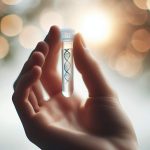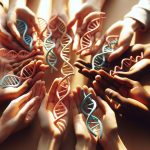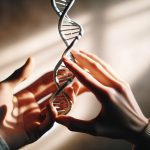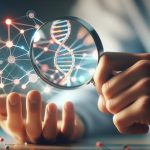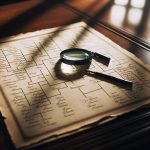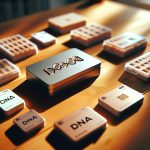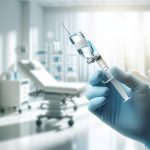If you’re eager to uncover your familial roots or clarify any doubts regarding the relationship with your siblings, considering a sibling DNA test kit could be your next step. It’s common to feel a bit wary, questioning whether these kits are private, accurate, and user-friendly.
After reviewing numerous DNA kits on the market aimed at addressing such concerns, I’ve pinpointed the ones that stand out in terms of database size for cross-referencing, privacy safeguards, detailed feedback on results, and reliable sibling match accuracy. This effort has led me to recommend one option that notably shines above the rest.
AncestryDNA emerges as the premier choice for those seeking clarity on sibling relationships through DNA testing. It distinguishes itself by offering an extensive genealogical database for a comprehensive background search, ensuring user information is protected with top-notch security measures, and delivering precise results about potential sibling connections. Its interface is designed for easy navigation while providing thorough reports on findings. With AncestryDNA, diving into your family history becomes not only feasible but also straightforward and secure.
In summary, if finding siblings or exploring deeper into your genetic lineage matters to you, AncestryDNA provides a solid foundation for these discoveries with confidence and ease.
Pressed for Time? Discover the Top DNA Testing Kits for Siblings
Discovering family connections and tracing lineage has been revolutionized by DNA testing, providing a fascinating window into our ancestral past. Among the leaders in this field is AncestryDNA, renowned for its vast collection of DNA data and family trees. This platform simplifies the process of finding siblings and relatives worldwide, making it a treasure trove for genealogy enthusiasts.
Another key player is MyHeritage, standing out with its detailed ancestry reports and an intuitive family tree builder. It excels at helping individuals connect with their relatives effortlessly, fostering deeper understanding of familial bonds.
For those interested in health insights alongside sibling matches, LivingDNA offers a unique proposition. It delves into how your DNA influences your health, adding another layer to the discovery of familial ties.
With its widespread popularity and comprehensive user database, 23andMe emerges as a prime choice for finding siblings. Its ease of use and extensive reach make it an attractive option for many seeking to uncover hidden or unknown familial connections.
FamilyTreeDNA takes a more detailed approach by analyzing maternal and paternal haplogroups. This allows you to trace your lineage through both sides of the family, offering a complete picture of your genetic heritage.
Lastly,< strong>Nebula Genomics pushes the boundaries with whole genome sequencing. By decoding nearly all genetic markers, it provides highly accurate matches among siblings and relatives. This level of precision is unparalleled in connecting individuals with their biological families.
In essence, these platforms offer various tools and insights for anyone looking to explore their ancestry or find long-lost family members through DNA testing. Whether you’re intrigued by your health genetics or eager to construct an elaborate family tree, there’s something available for every interest within this dynamic realm of discovery.
Top Sibling DNA Tests Analyzed
AncestryDNA: Detailed Ancestry Analysis and Best Choice for Sibling DNA Tests
Dive into your roots and unlock the mysteries of your ancestry with AncestryDNA, a cutting-edge platform that boasts the largest collection of DNA samples worldwide, totaling 18 million. This impressive database significantly increases your chances of discovering direct family ties, even pinpointing potential siblings you never knew existed. The process is surprisingly straightforward—a simple saliva swab is all it takes to embark on this journey of discovery.
What’s more exciting? For a brief period in 2024, AncestryDNA is offering an incredible deal where you can snag their DNA test and Family Tree Bundle for half its usual price. It’s an opportunity not to be missed for anyone curious about their familial background.
The true power of AncestryDNA lies in its unmatched ability to sift through millions of genetic markers to find matches that go beyond just identifying ethnic backgrounds—it connects you with relatives. With each match, there’s a detailed report backed by scientific methods that gauge the likelihood of familial connections, giving you peace of mind about the authenticity of these newfound bonds.
But AncestryDNA isn’t just about finding relatives; it offers tools to visualize and organize your family tree effectively. You can start with what you know—adding in confirmed siblings—and let the system illuminate possible connections, making it easier than ever to piece together your lineage puzzle.
Privacy is paramount at AncestryDNA. Rest assured, the platform defends your sensitive data fiercely with advanced encryption and only shares information when you give the green light.
For those more inclined towards tracing genealogy without undergoing testing first, there’s good news: AncestryDNA provides a free trial allowing unlimited access to historical records and other resources essential for building out comprehensive family trees.
Embarking on this exploration with AncestryDNA opens up new windows into understanding who you are and where you come from—connecting dots across continents and generations. Whether it’s uncovering hidden links or verifying known relationships, every discovery adds another piece to the puzzle of your unique heritage story. So why not take advantage of this limited-time deal before time runs out?
MyHeritage — A Simple Way to Find and Connect with Family Members
Dive into your heritage with MyHeritage, a platform that not only offers an affordable way to explore your DNA but also adds a unique twist by bringing visuals and connections to your ancestry exploration. With just a simple saliva sample, you embark on a voyage of discovery that takes mere weeks to reveal the secrets held in your genes.
Currently, there’s an irresistible offer on the table: snag their comprehensive DNA kit for just $39. It’s an unbeatable price aimed at making genealogy accessible to everyone. Such deals pop up occasionally, so it pays to keep an eye on their site.
What sets MyHeritage apart is its Family Networking feature, designed to connect you with newfound relatives with ease and security. Imagine finding a sibling you never knew existed; this platform makes such discoveries possible and straightforward by meticulously comparing your DNA markers with others in its vast database.
Moreover, constructing your family tree becomes both fun and insightful thanks to MyHeritage’s dynamic builder. It doesn’t just stop at whom you know; it incorporates potential matches too, painting a fuller picture of your lineage.
In essence, stepping into the world of genealogy with MyHeritage means unlocking stories of the past while securing connections for the future—all through an intuitive and engaging process.
Discover relatives and learn about your health with LivingDNA
Diving into the world of genetic exploration, LivingDNA offers a unique blend of services that not only help you find your siblings but also give you insights into your health predispositions. This is all made possible through a simple process involving a saliva swab. Once submitted, expect to uncover the mysteries of your DNA in just about 6 to 8 weeks.
What sets LivingDNA apart is its sophisticated approach to discovering sibling connections. Using an extensive DNA comparison against their database, it zeroes in on potential sibling relationships with remarkable accuracy. This feature becomes a powerful tool for anyone looking to deepen family bonds or discover new ones.
In addition, LivingDNA steps up by integrating health insights tailored from your genetic makeup. This dual offering isn’t just about knowing where you come from but understanding how your genetics could influence your health journey down the line.
But there’s more—LivingDNA‘s family network visualization is like putting together a puzzle of your lineage. It doesn’t just show you who’s who; it builds bridges between known and newly discovered relatives, presenting a comprehensive view of your familial ties.
So, if embarking on an adventure that navigates through the roots and branches of your family tree while sprinkling some health wisdom along the way sounds appealing, getting started with LivingDNA might just be what you’re looking for.
Discover Relatives and Receive Health Insights with 23andMe
When you and your sibling decide to explore your genetic ties through 23andMe, the journey begins with a simple DNA test. This examination delves into specific markers within your DNA, aiming to pinpoint the depth of your biological connection. Whether determining if you’re full or half-siblings or uncovering a more distant relationship, the analysis is grounded in comparing bits of your DNA for similarities that suggest a shared lineage.
The magic really happens with 23andMe’s Relative Finder tool. For siblings who are both registered in their database, this feature shines by automatically recognizing and confirming your familial link based on how much DNA you share. It’s an effortless method for verifying kinship, invaluable for those seeking clarity about their family ties.
But it doesn’t stop at just mapping out relationships; 23andMe takes it a step further by offering rich ancestral reports. These delve into where you come from, tracing migration paths and even identifying traits passed down from ancestors. It’s like taking a historical journey together, revealing fascinating insights about the genetic threads that weave through your family tapestry.
Moreover, health insights offered by 23andMe can be eye-opening for siblings. By highlighting potential predispositions to certain health conditions you might share, these reports encourage proactive health and lifestyle choices informed by genetics.
In essence, starting with 23andMe not only brings siblings closer through confirmed connections but also offers a profound understanding of one’s heritage and health landscape—making it more than just finding out if you share parents but enriching knowledge about what makes you uniquely connected.
FamilyTreeDNA — Discover Your Ancestral Origins Through Male and Female Lineages
Dive into your family’s past with FamilyTreeDNA, a cutting-edge service that delves deep into both your mother’s and father’s ancestries. By focusing on maternal and paternal haplogroups, this service doesn’t just scratch the surface; it digs deeper to uncover siblings you might not have known existed. Just a simple saliva sample is all it takes to embark on this fascinating journey, with results ready in about six weeks.
What sets FamilyTreeDNA apart is its precision-driven technology. It sifts through DNA markers using sophisticated algorithms, matching you with potential siblings from its extensive database with remarkable accuracy. This means when you get a match, there’s a strong chance they’re actually related to you.
But it doesn’t stop at just identifying relatives. The platform offers an engaging way to visualize your connections through an interactive family tree tool. Here, you can plot out relationships with known siblings and integrate newfound ones, painting a vivid picture of your familial ties.
So why wait? Start unraveling the mysteries of your ancestry with FamilyTreeDNA. Whether you’re eager to connect with long-lost relatives or simply curious about your genetic lineage, this service opens up new avenues for exploration and connection within the branches of your family tree.
6. Nebula Genomics: Comprehensive Analysis of Your Entire DNA
Looking to uncover your family roots and connect with long-lost siblings? Nebula Genomics is your go-to solution. Their cutting-edge approach employs entire genome sequencing, a method that scrutinizes nearly every bit of your DNA. This in-depth analysis is key to accurately identifying relationships between siblings you might not have known existed.
By comparing your genetic blueprint with their extensive database, Nebula Genomics zeroes in on potential familial links with remarkable precision. It’s like having a high-powered lens that brings the picture of your genetic heritage into sharp focus, enhancing the chances of finding genuine connections.
What’s more, they offer a unique feature: the ability to visually map out your family lineage. As it discovers possible sibling matches, these new branches are woven into your family tree effortlessly. It’s not just about names and data; it’s about seeing the tapestry of your shared history come alive before your eyes.
Dive into the journey of self-discovery and start building bridges to those who share pieces of you — all it takes is a simple saliva sample, and within 8-10 weeks, you could be embracing newfound relations courtesy of Nebula Genomics
Guidance for Selecting the Ideal Sibling DNA Test Kit
When choosing the ideal DNA test kits for sibling identification, there are several key factors to consider, ensuring that the selected kit caters precisely to your needs. Firstly, a vast database is crucial as it significantly boosts the chances of locating potential siblings. Opting for a kit with a substantial number of users can make all the difference in successfully finding genetic matches.
Privacy is another paramount concern. It’s essential to select kits that commit to protecting your genetic information through strong encryption and only share details with your explicit permission. This safeguard helps maintain personal privacy while navigating such sensitive explorations.
The importance of clear, detailed reports cannot be overstated. These reports not only shed light on potential sibling connections but do so with remarkable precision, facilitating a deeper understanding of one’s genetic ties.
Ease of use also plays an integral role in enhancing user experience. Kits designed with user-friendly interfaces make navigating through complex DNA data a breeze, making the journey toward discovering sibling connections less daunting.
While not directly related to finding siblings, access to health insights based on genetic markers adds value by offering a glimpse into broader health implications tied to one’s genetics. Although optional, this feature can enrich understanding beyond mere familial connections.
All things considered, identifying the right DNA test kit hinges on these core elements—database size, privacy assurance, report detail level, ease of navigation, and the bonus of health insights—each playing its part in simplifying and securing this profoundly personal quest.
Different Kinds of DNA Tests for Siblings
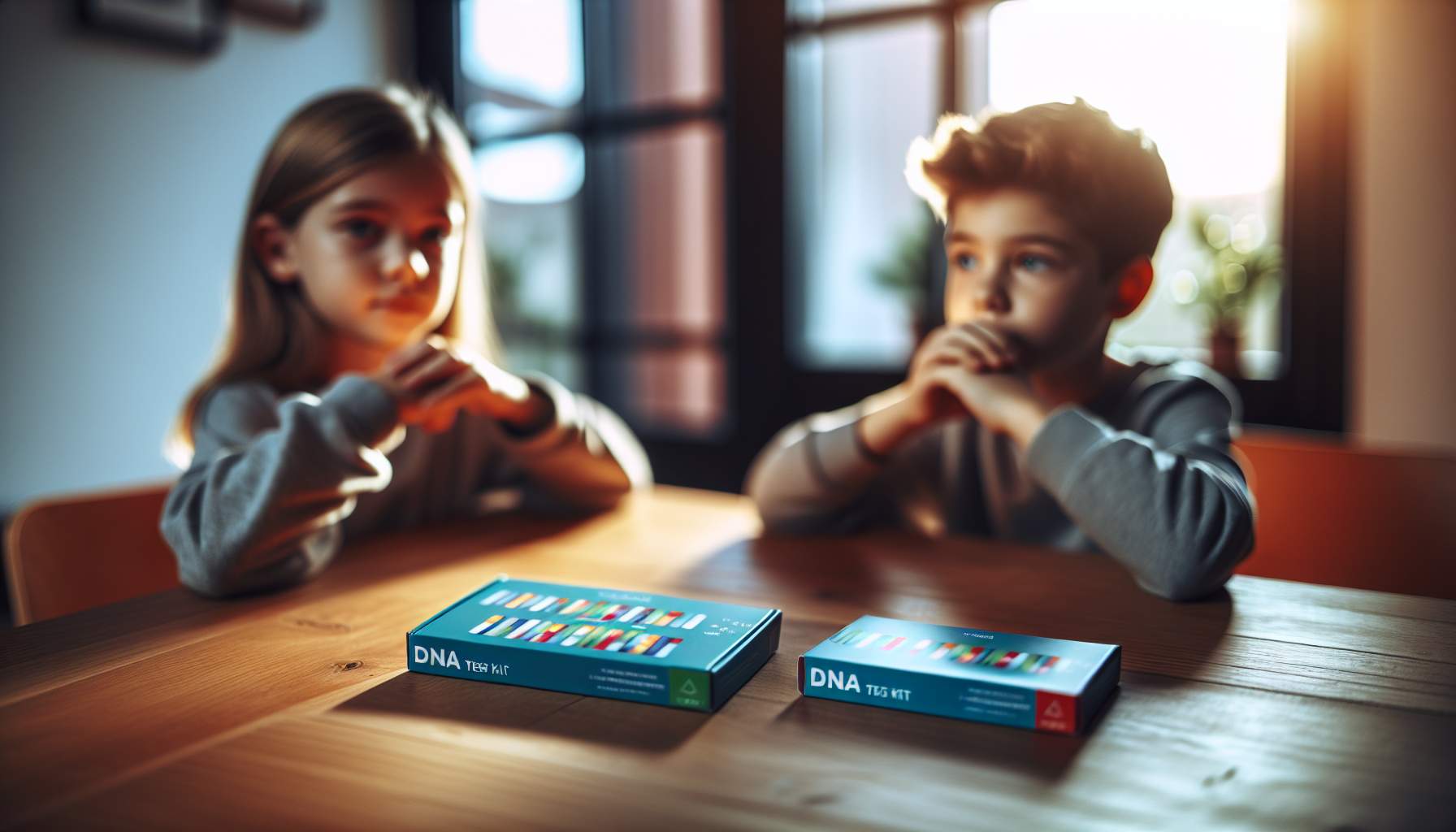
In the realm of genetic testing, understanding familial connections has been simplified through various methods. Among these, three pivotal tests stand out: Full Sibling, Half Sibling, and Avuncular tests.
The Full Sibling test serves a critical role in determining if two individuals share the same biological parents, offering clarity on whether they are fully related siblings. On the other hand, a Half Sibling test is designed to uncover if two people have only one parent in common, shedding light on half-sibling relationships. Diving into extended family ties, the Avuncular test dives deeper into the gene pool to establish a genetic link between an individual and their aunt or uncle, proving invaluable for nieces and nephews curious about their biological heritage.
These tests are not just medical procedures but journeys into understanding one’s roots and connections that bind families together. Each has its unique place in unraveling complex familial webs, with results often illuminating paths to newfound relationships or strengthening bonds within families. Such advancements in genetic testing open doors to personal discovery and foster a deeper appreciation for the intricate tapestry of family genetics.
Understanding the Functioning of Sibling DNA Tests
When it comes to understanding the genetic connection between individuals, sibling DNA tests are a key tool in the arsenal of modern science. These examinations delve into the genetic code shared among people to ascertain their biological relationship—specifically, whether they are full or half-siblings, or have no blood relation at all. By focusing on certain DNA segments known for their variability from person to person, these tests offer insights into familial bonds.
Labs conducting these tests don’t just look at the raw data; they apply sophisticated statistical techniques to interpret it. This mathematical approach helps determine the probability that tested individuals share both parents (full siblings), just one parent (half-siblings), or none (unrelated). It’s a fascinating blend of biology and statistics that sheds light on family connections with remarkable precision.
Understanding our biological roots not only satisfies human curiosity but also has practical implications for medical history and legal matters. It’s a clear-eyed glimpse into our genetic blueprint, offering definitive answers where uncertainty once reigned.
Understanding the Function of Autosomal DNA
Autosomal DNA tests examine the first 22 chromosomes, which aren’t linked to gender. Siblings, both full and half, inherit a notable chunk of their autosomal DNA from their parents. Typically, full siblings share around half of this type of DNA, while for half-siblings, this figure drops to about a quarter.
Significance of X and Y Chromosomes
In tests that dive into our genetic makeup, the X and Y chromosomes are big players. For guys with the same dad, their Y chromosomes are a carbon copy of each other, making it a no-brainer to confirm they’re related through their father’s line. On the flip side, gals get one X chromosome from mom and another from pop. This mix helps pinpoint sibling connections on both sides of the family tree.
Drawbacks of DNA Testing Between Siblings
Sibling DNA tests are pretty reliable but aren’t perfect. They can tell you if there’s a likely biological connection, but don’t expect them to pinpoint the exact type of bond. And while it’s a long shot, sometimes folks who aren’t related end up sharing more genetic similarities than you’d think possible.
Moral Guidelines
Before diving into a DNA test, it’s crucial to think about how it might affect your privacy. These tests can uncover family secrets that could stir up emotions, so it’s wise to chat with anyone else involved beforehand. Also, don’t skip over the fine print – understanding the privacy policy of the DNA testing company you’re using is a must.
Understanding the Findings
When you get your test results, look out for phrases like « likelihood ratio » or « confidence level. » These bits of jargon basically tell you how probable it is that the person tested is a sibling. The higher these numbers, the more likely it’s a family match.
Comparative Guide: Top Sibling DNA Tests
Delving into the realm of genealogy through DNA testing kits offers a fascinating glimpse into our past, connecting us with relatives and mapping our ancestral lineage. Each kit comes with its unique set of features, aimed at providing users with an enriching experience in uncovering their genetic history.
Ancestry, boasting the largest database of 18 million, shines for those eager to find relatives but lacks in mtDNA and Y-DNA mapping. Its notable family tree builder complements the service, making it easier for users to visualize their lineage. The journey from swab to results spans 6-8 weeks, with a price tag of €91.24, positioning it as a premium choice for enthusiasts.
For those seeking a balance between cost and features, MyHeritage stands out. With a solid database size of 3.8 million and comprehensive DNA mapping capabilities, it assures a detailed exploration at €82.02. The turnaround time is quicker too—just 3-4 weeks.
LivingDNA caters to users prioritizing depth in their search over database size; with 1.5 million entries and thorough mtDNA & Y-DNA mapping alongside family-building tools at €82.94 for results within 6-8 weeks.
Tech-savvy individuals might lean towards 23andMe. Despite its heftier price point at €211.05, the mix of a substantial 13.6 million database size and swift results delivery within just 3-4 weeks makes it appealing.
On the more economical side, FamilyTreeDNA‘s offering merges affordability (€72.81) with comprehensive services including DNA mapping and family tree building tools while keeping pace on delivery times (6-8 weeks).
Lastly,Nebula Genomics jumps into the fray as an option for those unbothered by database size but interested in deep genetic insights without the family tree feature; however, this comes at the highest cost (€229.48) along with longer waiting periods (8-10 weeks).
In summing up this mosaic of options tailored to various needs and budgets—ranging from extensive databases aiding relative-finding quests to sophisticated DNA mappings—it’s clear that there’s something out there for everyone looking to embark on an ancestry discovery adventure.
Discover the Top Sibling DNA Test Kit
Diving into the depths of your family’s genetic makeup can be an enlightening experience, revealing hidden connections and enriching your understanding of where you come from. The key to unlocking these secrets lies in choosing a reliable DNA test kit. Such a tool not only offers detailed analysis but ensures that any sibling connections found are accurate, all while keeping your information under lock and key.
Among the myriad options available, AncestryDNA stands out as the premier choice for those eager to explore their sibling relationships through genetics. This is not just because it boasts one of the largest databases around, increasing your chances of discovering potential siblings. It also prides itself on delivering results with clear confidence levels, making it easier for you to understand how closely someone is related to you. Plus, its easy-to-navigate interface removes any technical hurdles from your path.
Starting with AncestryDNA isn’t just about finding relatives; it’s about stepping securely into a journey that respects your privacy at every turn. So if you’re ready to piece together the puzzle of your familial past, there’s no better companion than AncestryDNA for this adventure.
Common Questions About Sibling DNA Tests
How precise are DNA tests for siblings?
Sibling DNA tests are known for their high accuracy levels. They operate by examining specific areas of your DNA and comparing them with the genetic information of others in a given database. The principle is straightforward: the more genetic similarities that exist between two individuals, the greater the chance that they share a bloodline. Despite this, it’s crucial to understand that these tests do not serve as a definitive proof of sibling connections. In some instances, resemblances in DNA could stem from shared ancestry rather than a direct familial link, skewing the results somewhat.
Is it possible for a DNA test to tell the difference between full and half-siblings?
Certainly, most DNA tests are pretty savvy at telling apart full siblings from half ones by examining the shared genetic markers. They kind of act like a detective, piecing together clues to figure out if two people have the same set of parents or just one in common. But it’s key to remember that these tests aren’t foolproof—they’re more about playing the odds rather than giving you a guarantee.
Is it simple to use DNA testing kits?
DNA kits are a breeze to use, coming with easy-peasy instructions to get and mail your DNA. The magic happens online where your ancestry comes alive through cool family trees or in-depth reports you can actually understand.
Do DNA kits offer health insights?
Kits like LivingDNA and Nebula Genomics dive into your DNA to shine a light on health traits you might share with your siblings. Though they’re not designed to pinpoint if you’re related, they reveal common health risks lurking in your genes.
What percentage of DNA is common among brothers and sisters?
Generally, brothers and sisters who share both parents inherit around half their genes from each of them. This mix can have a bit of variation due to how genes are passed down. On the flip side, when siblings only share one parent, they tend to have about a quarter of their DNA in common.
How Siblings Might Receive Varying DNA Ancestry Test Outcomes
Brothers and sisters might see different ethnic mixes in their DNA ancestry tests. This happens because they each get a unique set of genes from their mom and dad, making their genetic heritage a bit of a lottery. So, don’t be surprised if your sibling’s test shows a different blend of family roots than yours!
Do Brothers and Sisters Have Identical DNA?
Contrary to what some might think, not all siblings possess identical strands of DNA, with the exception of identical twins. Each offspring inherits a blend of genetic material from their parents, making their DNA unique. This genetic diversity is the reason behind each sibling’s distinctive features and various health risks.


